Model Home 2013 by Michael Lin and Atelier Bow-Wow with Andrew Barrie
Architectural drawings of a small workers' shack that featured in an exhibition in Shanghai, China, have been enlarged and used to create a full-scale replica in Auckland, New Zealand.
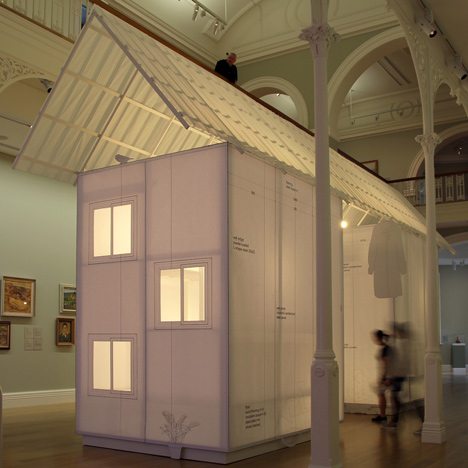
Tokyo architects Atelier Bow-Wow collaborated with Japanese artist Michael Lin on the design of the original structure, which was based on the workers' shacks found throughout China. It housed the painters who produced Lin's large-scale artworks for an exhibition last year at Shanghai's Rockbund Art Museum.
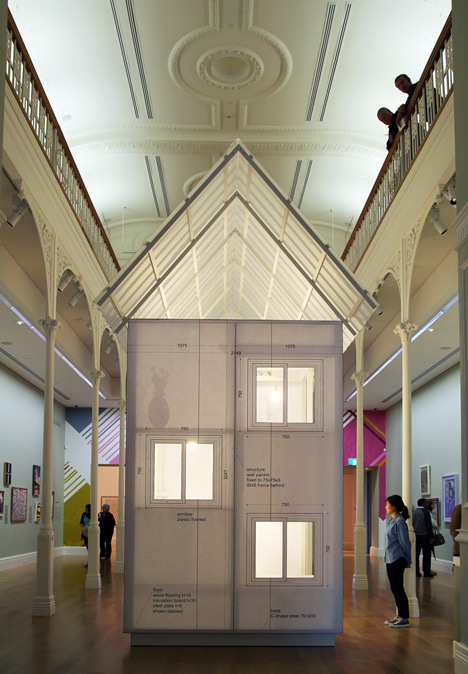
Whereas the building in Shanghai was made from welded steel and structural insulated panels, the installation held as part of the Auckland Triennial required a rethink of the materials in order to reduce costs and waste after the event.
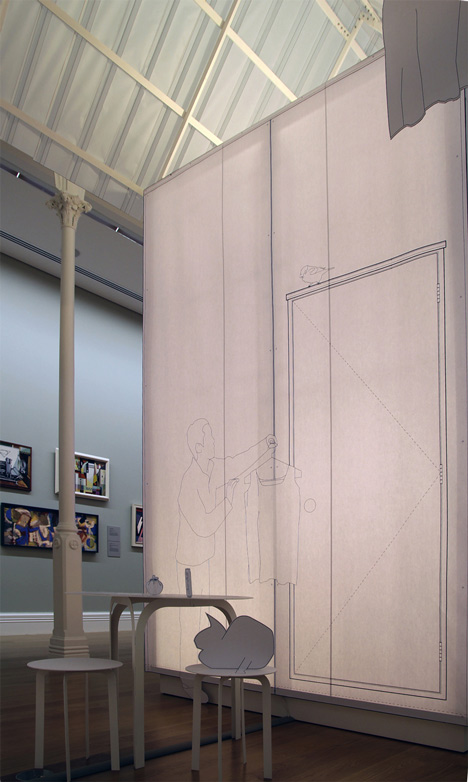
Professor Andrew Barrie from the University of Auckland was asked to help develop a more appropriate and efficient solution. "We proposed this idea of making the building out of paper and so a really literal document of what had happened in Shanghai," he explained in a video published on the event's website.
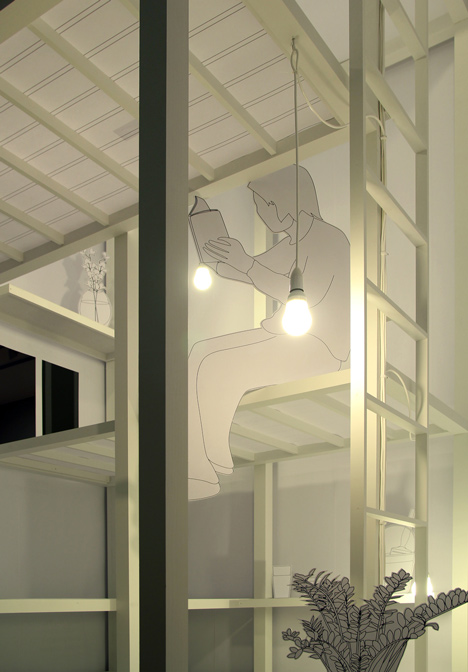
"We used some paper modelling techniques that I'd been developing over the last little while to make little models and just blew those back up to the full scale of the building," Professor Barrie added.
Barrie enlarged Atelier Bow-Wow's original construction drawings and fixed them to a prefabricated timber frame built by architecture students from the university, using a full scale version of the Japanese paper modelling technique known as okoshi-ezu.
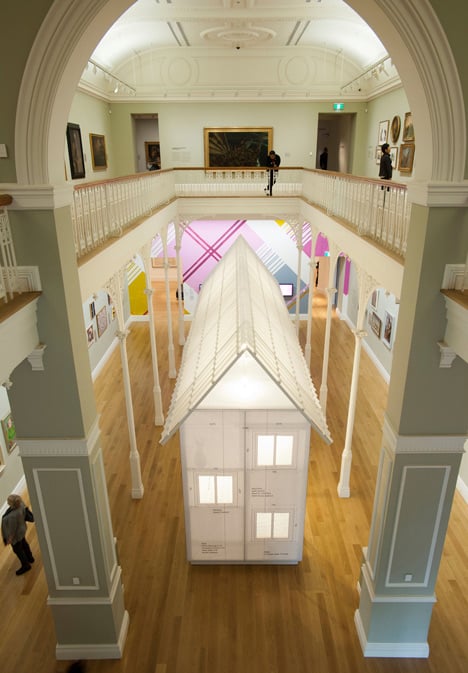
The paper surfaces retain the original dimensions and annotations, while additions including an outline of a person, furniture, flowers and a bird perched on a doorframe recall its original inhabited state.
Other paper architecture projects on Dezeen include a stage set for an opera designed by Frank Gehry and a canopy of patterned paper sheets installed at this year's Stockholm Furniture Fair – see more paper design and architecture.
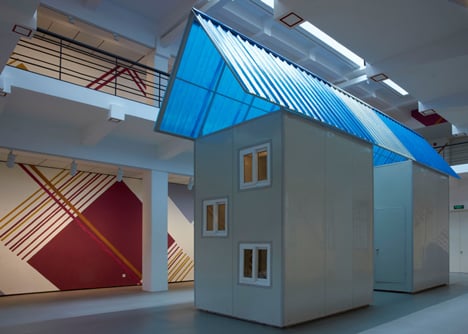
Atelier Bow-Wow previously designed a mobile studio and event space made from carbon fibre and turned a townhouse in Amsterdam into a showroom for Dutch design brand, Droog – see more Atelier Bow-Wow.
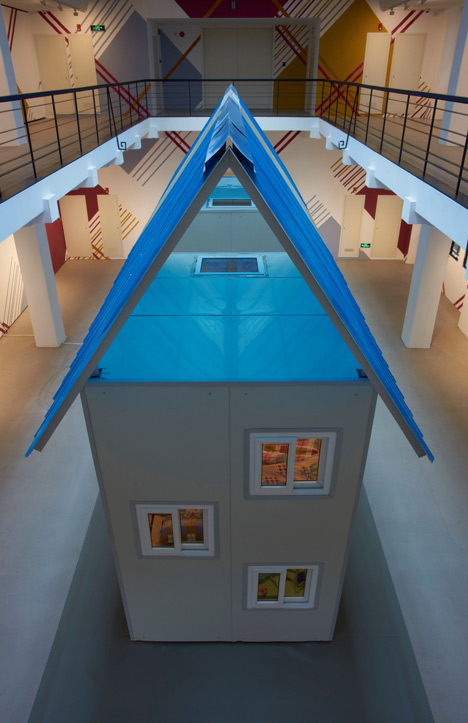
Photography is by Nick Hayes, except where stated otherwise.
Here's some more information about Model Home 2013:
Model Home 2013
Michael Lin and Atelier Bow-Wow with Andrew Barrie
The Model Home 2012 exhibition was held at the Rockbound Museum in Shanghai. The work of Shanghai-based artist Michael Lin and Tokyo-based architects Atelier Bow-Wow, it’s major elements were a series of huge wall paintings that filled the entire building, and building units that had temporarily housed the workers who had carried out the painting.
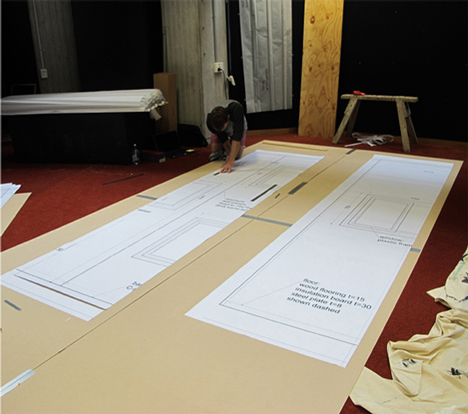
Model Home 2013 involved the reworking of the Shanghai project for installation in Auckland Art Gallery’s Lower Grey Gallery for the 5th Auckland Triennial.
The specific design challenge was how to recreate the building, which in Shanghai had been made of welded steel frames clad in structural insulated panels – in the Chinese context, these are very low cost and easily worked materials.
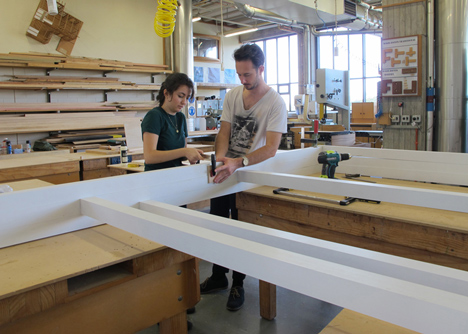
However, recreating this steel design in Auckland presented a design dilemma – it would have been expensive, created a lot of waste when the building was disposed of after the Triennial, and would have been conceptually inconsistent (in Auckland, no one would live in the house).
One possibility explored by the design was to translate the house into the Kiwi timber-and-plywood construction idiom. This would have reduced the cost somewhat, but not solved the dilemmas of waste and conceptual inconsistency.
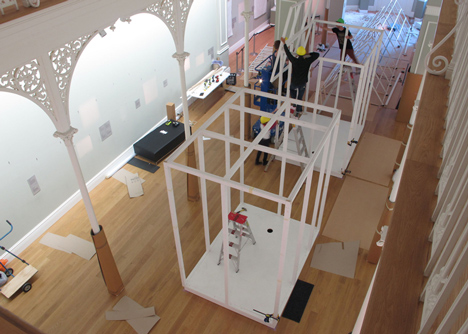
The solution proposed by Prof. Andrew Barrie was to create a paper version of the house. This was inexpensive, could almost all be recycled after the exhibition, and solved the conceptual inconsistency – rather than being a building, it served as a literal document of the original construction.
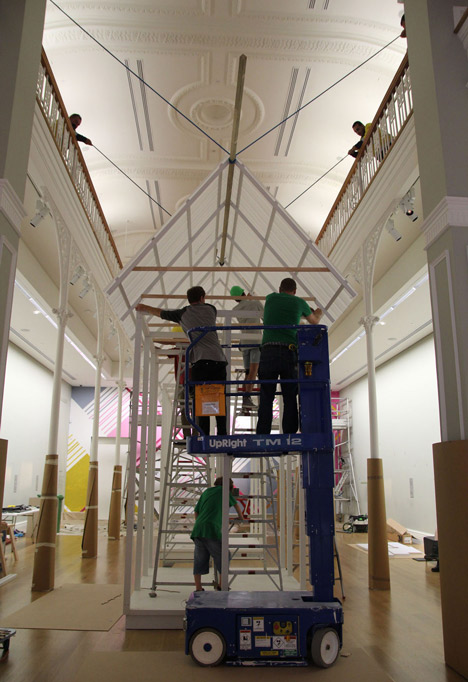
This use of construction drawings to represent the building adapted techniques previously developed by Barrie when making contemporary versions of okoshi-ezu, an ancient Japanese architectural drawing technique of making fold-up paper models that served as records and construction documents, particularly for teahouses.
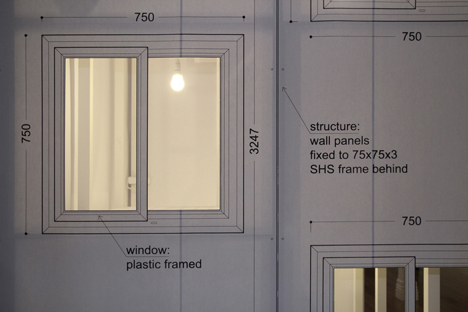
Every aspect of the design and construction sought to minimize costs and test the limits of readily available materials. The construction drawings for the Shanghai building were refined and amplified by Barrie’s team.
The structure was built by a group of architecture students who prefabricated timber frames that could quickly be assembled in the gallery. The roof structure was built only just strong enough to support its own weight, and was carefully lifted into place by riggers.
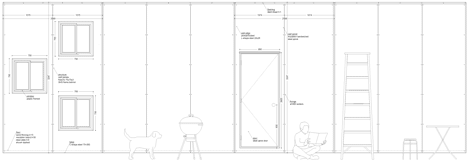
The walls and roof were made of drawings printed on standard 80gsm printer paper, hand folded, and joined with double-sided tape.
The lighting was simple bayonet fixtures on cables with supermarket light bulbs. A series of paper accessories, including painting tools, household items, super-thin furniture, a human figure and even a sparrow perched in the roof, add charm and recall occupation by the original worker occupants.
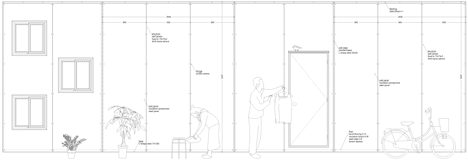
After the exhibition, the paper elements will be recycled and the timber frames broken down for re-use in future student projects.
Paper House Design: Andrew Barrie
Project Management: Melanie Pau
Construction Team: Melanie Pau, Howie Kang, Wade Southgate, Nick Hayes, Rita Mouchi, Patrick Loo, Yusef Patel, Sam Wood.